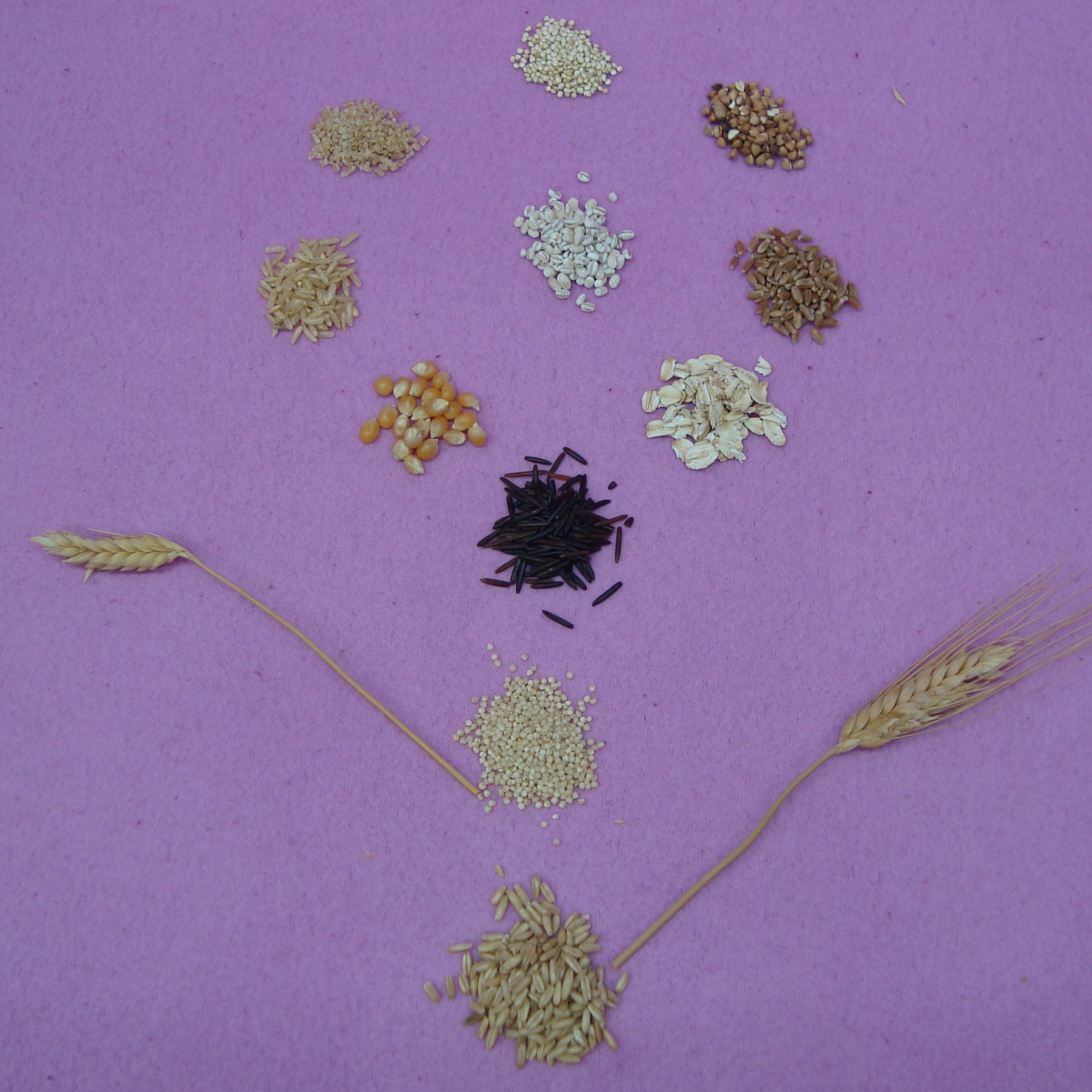
by Angela Hinkle | Apr 2, 2017
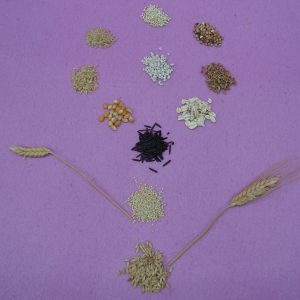 Wedding showers, baby showers, graduation parties – let’s face it, about half the celebration is based on the food that is served. Trays and plates of tasty morsels include a variety of colors, textures, sizes, and tastes. Why not include some healthy, whole grain options to join in on the fun?
Wedding showers, baby showers, graduation parties – let’s face it, about half the celebration is based on the food that is served. Trays and plates of tasty morsels include a variety of colors, textures, sizes, and tastes. Why not include some healthy, whole grain options to join in on the fun?
Whole grain foods contain the whole edible part of the plant – the bran, endosperm, and germ. Consuming whole grains offers many health benefits like reducing risk of heart disease, type 2 diabetes, and some cancers. Look for 100% whole grain on a package or “whole” as the first item in the ingredient list. Think of whole grain party foods as an extra “present” to give new moms, graduates, and engaged couples a healthy boost.
Try serving whole grain crackers topped with your favorite cheese and herb, whole grain pancakes or French toast with fruit, oatmeal cookies, ham and grainy mustard on mini whole grain rolls, finger sandwiches on whole grain bread cut into festive shapes, or popcorn (a whole grain) with a dash of chili powder, cumin, and garlic. Click kingarthurflour for even more whole grain party ideas.
Here’s a light spring side salad with a whole grain sure to please guests at your next shower.
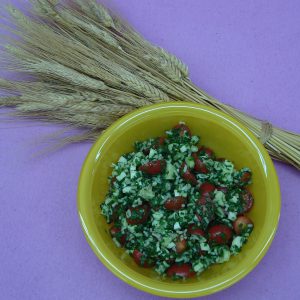
Spring Grain Salad
1 Cup cooked brown or wild rice or whole grain barley, bulgur, couscous, or other grain
6 Cups spinach or kale, stems removed
1/4 Teaspoon each salt and pepper
1/4 Cup fresh mint leaves
1/3 Cup lemon juice
1/4 Cup olive oil
1 Garlic clove, finely chopped
1 Pint grape or cherry tomatoes, halved
1/2 Chopped cucumber (preferably seedless)
3/4 Cup mozzarella cheese, small dice (optional)
- In a food processor, combine the spinach and mint and process until finely chopped, scraping down sides of the bowl, if necessary.
- In a large bowl, whisk together the lemon juice, oil, garlic, salt, and pepper. Add the whole grain of choice, spinach mixture, tomatoes, cucumber, and cheese. Toss to combine.
To incorporate whole grains into your shower days and every day, go to MakeHalfYourGrainsWhole.
And the next time you get the whole gang together, go whole grain!
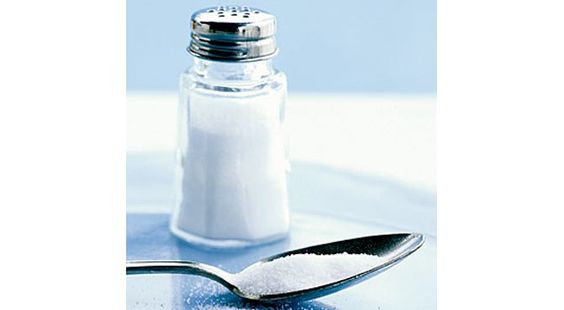
by Dorothy C. Lee | Mar 13, 2017
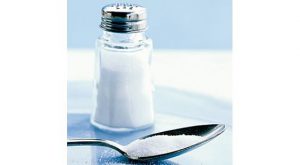 March 10 – 16, 2017 is National Salt Awareness Week. Salt is the main source of sodium in the American diet. Sodium is a mineral only needed by the body in small amounts. It is found in foods, mostly as sodium chloride.
March 10 – 16, 2017 is National Salt Awareness Week. Salt is the main source of sodium in the American diet. Sodium is a mineral only needed by the body in small amounts. It is found in foods, mostly as sodium chloride.
Sodium has an important role in maintaining good health, however, over-consumption of sodium may lead to chronic diseases. According to the American Heart Association, Americans consume more than twice the recommended daily amount. The US Dietary Guidelines recommended amount is 1,500 milligrams a day. Most Americans consume 3,400 milligrams a day.
Sodium occurs naturally in some foods, but most of the sodium in the American diet comes from processed foods, restaurant meals, and as seasonings. Table salt is composed of sodium and chloride elements. One teaspoon of salt contains 2,000 milligrams (mg) of sodium.
For a healthful diet, it is important to eat a variety of foods. Choose a varied diet that has only a moderate amount of sodium.
When shopping, read the labels on food items. Select the foods with the lowest levels of sodium. To cut down on sodium in your diet, use these foods less often:
- Canned and processed convenience foods
- Salty snacks and crackers
- Processed cheeses
- Salted, smoked, or cured meats
- Pickled or canned fish
- Canned soups and meats
- Pickles, sauerkraut, relishes
- Ingredients used in home baking and cooking (baking powder, soda, and MSG)
Another way to cut down on sodium is by using less salt in cooking. Use herbs and spices for seasoning instead of salt. Flavor is a very important component in the enjoyment of food. A famous gourmet once said, “Flavor is the soul of food; and herbs, seasonings and spices are the soul of flavor.” Remove your saltshaker and replace it with an herb shaker. A healthy alternative seasoning to sodium, herbs and spices add zest and flavor to food.
When dining out, select broiled poultry, fish, or other broiled or grilled meat entrees. Request foods be prepared without salty seasonings. Order green salads with oil and vinegar dressing or ask for the dressing to be served on the side.
Varieties of salt substitutes are available in the spice section at your grocery store. Potassium chloride is the major component of these products. Check with your doctor before using salt substitutes.
Try these recipes and see how tasty foods low in salt can be:
All-Around Mix
2 teaspoons garlic powder
2 teaspoons onion powder
2 teaspoons paprika
2 teaspoons white pepper
2 teaspoons dry mustard
1 teaspoon ground celery seeds
Use to season salads, meats, poultry, or vegetables.
Shake and Make
2/3 cup nonfat dry milk powder
½-teaspoon pepper
½-teaspoon dry mustard
2 teaspoons low-sodium chicken-flavored bouillon granules
½-teaspoon poultry seasoning
Use as a crispy coating for fish, poultry, or meats. Cook according to recipe. About 2/3 cup is enough for one chicken or several fish fillets.
References
Mankato Health Program Foundation Inc., Mankato MN
American Heart Association, heart.org
For further information, contact:
Dorothy C. Lee, C.F.C.S.
UF/IFAS Extension Escambia County
3740 Stefani Road
Cantonment, FL 32533-7792
(850) 475-5230
dclee@ufl.edu
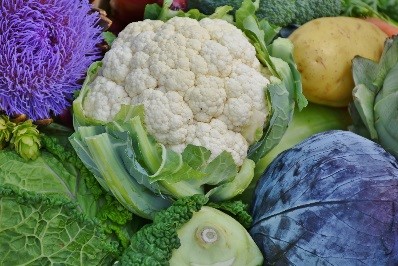
by Laurie Osgood | Mar 13, 2017
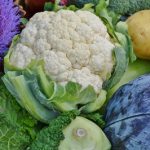 Looking for a colorful and fresh side dish? Then you should try roasting your vegetables! Roasted vegetables are quick, easy, and flavorful. When roasted, vegetables become brown and crisp on the outside, making their natural sugars caramelize. This caramelization process makes the vegetables sweet and full of flavor. An added bonus of roasting your vegetables is that they require very little prep time.
Looking for a colorful and fresh side dish? Then you should try roasting your vegetables! Roasted vegetables are quick, easy, and flavorful. When roasted, vegetables become brown and crisp on the outside, making their natural sugars caramelize. This caramelization process makes the vegetables sweet and full of flavor. An added bonus of roasting your vegetables is that they require very little prep time.
Vegetables are an important part of our diet. The US Dietary Guidelines recommend that fruits and vegetables fill half our plate (USDA, 2015). Vegetables are packed with vitamins, minerals, and fiber, and are low in calories.
SOME SEASONAL VEGETABLES THAT ARE DELICIOUS WHEN ROASTED:
- Whole Cauliflower: Pull all the leaves off and remove part of the core. Add 1 tbsp. of olive oil into a pan, add the whole cauliflower, cut side down, and add salt and pepper. Roast at 400ºF for 45 minutes to an hour, until well-browned on the outside.
- Asparagus: Trim off the tough ends and put the spears in a pan with 1 tbsp. olive oil, salt, and pepper. Roast at 400ºF for 10-15 minutes, depending on thickness.
- Green Beans: Just like the asparagus. Trim off the tips, toss with 1 tbsp. olive oil, salt, and pepper. Add to pan, and roast at 400ºF for 15 minutes.
- Broccoli: Trim off the leaves and cut up into florets. Add 1 tbsp. olive oil, salt, and pepper. Roast at 400ºF for 35 minutes. When roasting broccoli, the florets will end up singed a bit, but the stalks will become soft, sweet, and delicious.
- Carrots: Peel carrots; cook them whole or split in half lengthwise. Add 1 tbsp. olive oil, salt, and pepper. Roast at 400ºF for 30-40 minutes.
- Brussels sprouts: Trim off the ends, toss with 1 tbsp. olive oil, salt, and pepper, and roast at 425ºF for 40 minutes. The sprouts will be crispy and wonderful when roasted.
Resources:
2015–2020 Dietary Guidelines for Americans: https://health.gov/dietaryguidelines/2015/
Florida Department of Agriculture and Consumer Services, Fresh from Florida website http://www.freshfromflorida.com/Food-Nutrition/Buy-Fresh-From-Florida
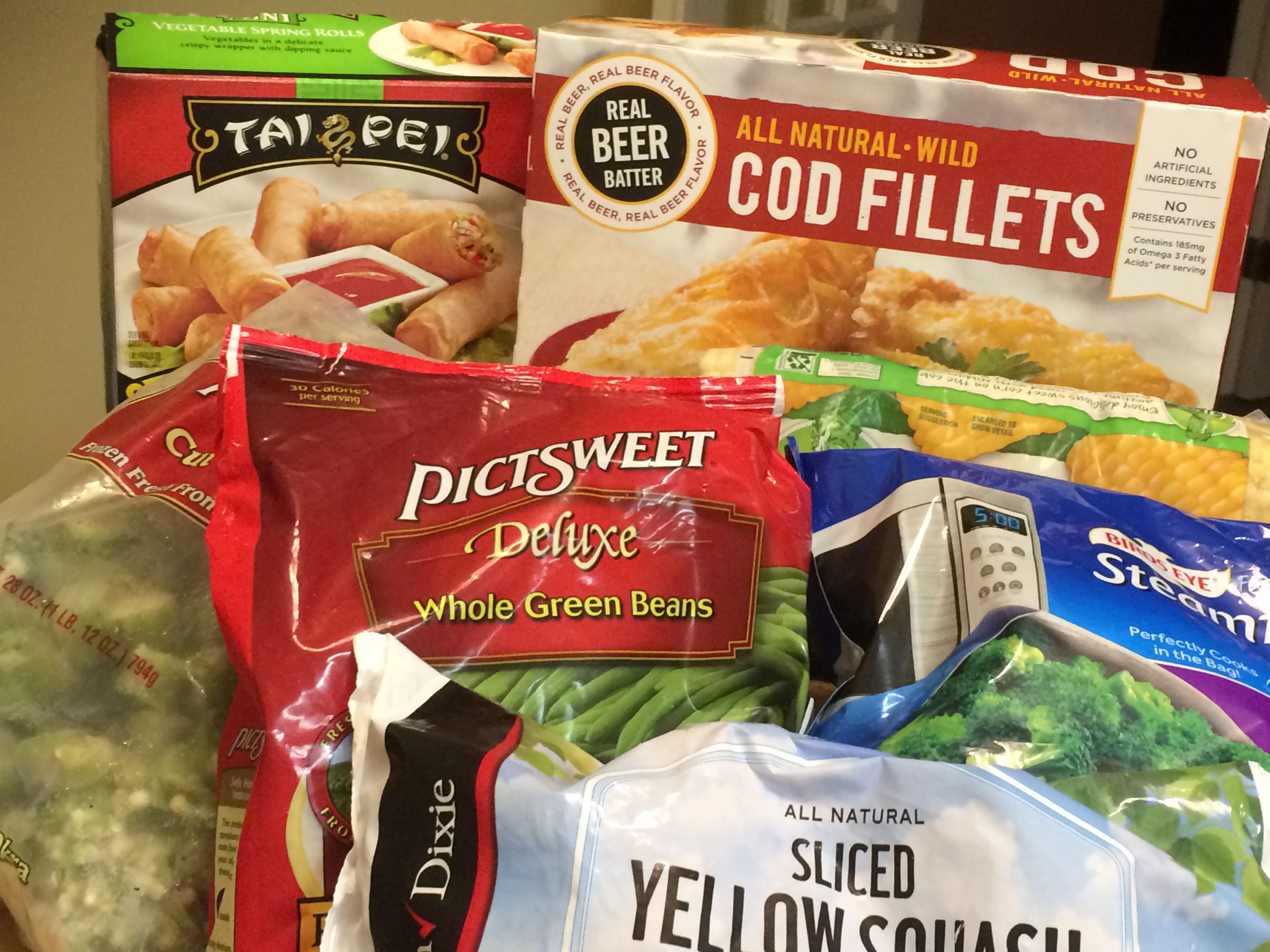
by Marie Arick | Mar 1, 2017
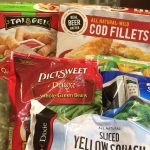 With the mention of a frozen dinner, do you feel nostalgic and think of the options from when you were a child? When was the last time you perused the frozen food section of the grocery store? The freezer aisle now contains over 3,700 different food options, according to the National Frozen & Refrigerated Foods Association (NFRFA). Items range from your favorite ice cream to vegetables that are packaged and frozen at the peak of freshness. You can find a single-serving option or even a complete family meal.
With the mention of a frozen dinner, do you feel nostalgic and think of the options from when you were a child? When was the last time you perused the frozen food section of the grocery store? The freezer aisle now contains over 3,700 different food options, according to the National Frozen & Refrigerated Foods Association (NFRFA). Items range from your favorite ice cream to vegetables that are packaged and frozen at the peak of freshness. You can find a single-serving option or even a complete family meal.
The NFRFA touts “frozen foods include healthy produce, perfectly-portioned meals, a variety of ethnic cuisines and dishes to meet strict dietary needs.” Test kitchens are full of chefs creating meals that are available for the “hungry man” or for those seeking proper portions. The portion-perfect meals are dietician/nutritionist-approved and provide balanced options in a quick, convenient package.
If variety is something you seek, not a problem – the freezer section can provide this. There are breakfast, lunch, dinner, dessert, and even snack options available. Frozen meals also can help to decrease food waste, thanks to single-serving packaging options.
Are you concerned about the nutritional content of frozen fruits and veggies? According to the National Library of Medicine, whether fresh or frozen, “the single ingredient version of the same fruits and vegetables revealed relatively equivalent nutrition profiles.” Technology has optimized the freezing process, enabling vegetables to be packaged and frozen in a short window of time to preserve the integrity of the food and the nutritional content as well.
If you have not done so, give frozen food options a chance. Take a few extra minutes on your next trip to the grocer and look at the options available. The frozen foods cases are full of tasty, nutritious, and perfectly portioned selections that can be prepared in minutes for those hectic days when prepping and cooking a meal is not an option.
by Amy Mullins, PhD, RDN | Feb 21, 2017

National Nutrition Month® is a month-long nutrition education and information campaign that is put on by the Academy of Nutrition and Dietetics. This year’s theme is “Put Your Best Fork Forward.” The idea behind the theme is that every bite counts and that taking small steps to change our eating habits can result in positive, lifetime changes! This idea is one that every Registered Dietitian Nutritionist (RDN) is familiar with. RDNs are taught very early on that for a goal to be met, it is key that it is both achievable as well as personalized to their client’s eating style. Put Your Best Fork Forward is really about finding ways to be healthy that you enjoy.
National Nutrition Month® 2017 has five key messages that will help you find your healthy eating style.
- Create an eating style that includes a variety of healthful foods that you enjoy. As they say, it’s not nutrition if it’s not eaten!
- Practice cooking at home and be willing to try new, healthier ingredients. There are plenty of cooking apps and recipes available on eatright.org and other reputable internet sites. Pick one and give it your best shot!
- Follow MyPlate guidelines when building your meal. MyPlate replaced the Food Pyramid in the year 2011 and has a bigger focus on portion size and building a healthy plate at every meal.
- Finding physical activity that you enjoy is important. This can be playing with your pet, pacing while you talk on the phone or joining a team sport. Anything you will enjoy that gets you moving!
- RDNs are skilled in all things diet and are the best source of personalized nutrition advice for you. They are able to assist you in making healthful changes that you’ll enjoy making!
Some examples of small changes in eating patterns are to: exchange a whole grain for a refined grain once a week, eat dinner in the dining room on Fridays, or plan to enjoy a home-cooked meal twice a month. These changes should be incorporated until you feel comfortable with them. Then, they could be changed to eating whole grains twice a week, eating dinner in the dining room Thursday and Friday or eating a home-cooked meal once a week. These modest shifts in our eating patterns can become healthy habits we enjoy for life.
Resources:
Academy of Nutrition and Dietetics
http://www.eatright.org/
MyPlate Website
https://www.choosemyplate.gov/
Contributing author – Sydney Nutting, FDACS Intern, Spring 2017
by Marie Arick | Feb 14, 2017
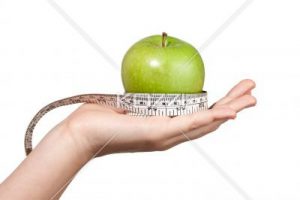
Knowing your waist circumference is a simple way to determine if you are at risk for heart disease. A waist circumference larger than 40 inches for men or 35 inches for women deems a person overweight per National Institute of Health (NIH) guidelines.
It is commonly known that being overweight is associated with a barrage of health problems such as heart disease, hypertension, diabetes, and even some cancers. Where those extra pounds are carried is important to note. When those pounds are concentrated around the waist, it “is an indicator of the level of internal fat deposits which coat the heart, kidneys, liver, digestive organs and pancreas” according to the Heart Foundation, versus carrying those extra pounds on your thighs and/or hips.
Waist circumference is a good indicator to utilize. It has been discovered in many cases that Body Mass Index (BMI) can overestimate body fat in certain people with high amounts of muscle mass. According to the NIH, “the good news is even a small weight loss, between 5 and 10 percent of your current weight, will help lower your risk of developing diseases.” Weight loss should be conducted in a healthy manner and incorporate physical activity. The Choose MyPlate website provides free exercise and dietary tracking and great practical information to aid in one’s journey.
The really simple way to predict your risk for heart disease can be as easy as measuring your waist. Taking a few moments to complete this task can be an enlightening step in managing your health and possibly prevent you from ‘waisting’ your heart away.

 Wedding showers, baby showers, graduation parties – let’s face it, about half the celebration is based on the food that is served. Trays and plates of tasty morsels include a variety of colors, textures, sizes, and tastes. Why not include some healthy, whole grain options to join in on the fun?
Wedding showers, baby showers, graduation parties – let’s face it, about half the celebration is based on the food that is served. Trays and plates of tasty morsels include a variety of colors, textures, sizes, and tastes. Why not include some healthy, whole grain options to join in on the fun?








